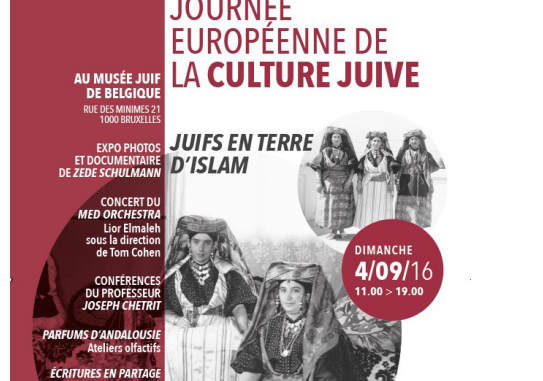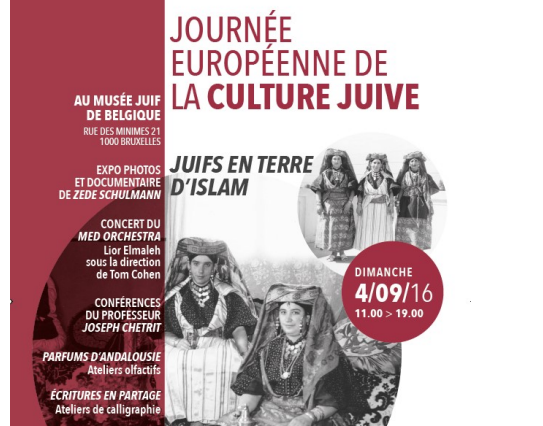
Yesterday was the annual European Day of Jewish Culture and Heritage, where Jewish culture is celebrated.
The Jewish Museum of Belgium decided that this would be a good time to celebrate how wonderful things were for Jews under Islamic rule.
Specific lectures and workshops were given on Jewish and Muslim calligraphy and the history of perfumes in Jewish and Muslim Andalusia. There was a concert of Judeo-Arabic music and a documentary about Jews in Morocco.
There is nothing wrong with studying Jews in the Muslim world. But there is a problem when it is presented in a biased way, as if Jews suffered no persecution and Muslims were nothing but benevolent and tolerant.
Yes, Jews nearly always had more rights in the Muslim world than they did in Europe throughout history. But having comparatively more rights is not the same as having equal rights, and they didn’t have anything close to equal rights. There were a specific set of rules that Jews had to adhere to in most of the Muslim world. As summarized here:
The manner in which the rules of dhimmitude were applied varied according to the political circumstances and the disposition of the ruler. There were periods of tolerance which gave a small degree of security to the dhimmis. However the fanaticism which could be riled up by the clergy could change the situation in small time. If the local Muslim population became intolerant or jealous of the successes of the dhimmi, then a pogrom would ensue. Communities could find themselves evicted, women raped, exorbitant ransoms placed on them, children abducted and forced to convert, and in other cases mass murders of the dhimmi population was condoned.
Rules would be formulated to deny the dhimmi due process of the law. Discriminatory and restrictive dress and behavior codes would be enacted and severely enforced to reduce the dhimmi into a state of despair and poverty. Dehumanization of the dhimmi was not uncommon, and generally the rule. Various forms of physical abuse were common.
Many times distinctive dress was specified to identify a dhimmi that he would be unable to either mix with a Muslim or even walk in a Muslim area of a city. Other rules specified such demeaning dress codes as not wearing shoes or sandals, not using certain colors, wearing stars on their clothing. Dhimmis were often prohibited from working in many occupations. Even rules were made as to how a dhimmi could ride a mule to distinguish him from a Muslim.
The non-observance of these rules would entail a severe beating. Often passing a Muslim on the wrong side would begin a beating that could leave a dhimmi mortally wounded. Since the dhimmis were denied the ability to testify against a Muslim, there was absolutely no recourse.
It is dishonest to concentrate on the growth of Jewish culture in the Muslim world – which is still a fascinating topic – without mentioning the other half of the equation of the oppression that the Jews had to endure while building their lives.
The museum’s program seems to be more oriented towards political correctness than for scholarship. Today, more than ever, Muslim antisemitism – both historic and contemporary – needs to be highlighted and exposed, not swept under the rug.
 We have lots of ideas, but we need more resources to be even more effective. Please donate today to help get the message out and to help defend Israel.
We have lots of ideas, but we need more resources to be even more effective. Please donate today to help get the message out and to help defend Israel.


Leave a Reply